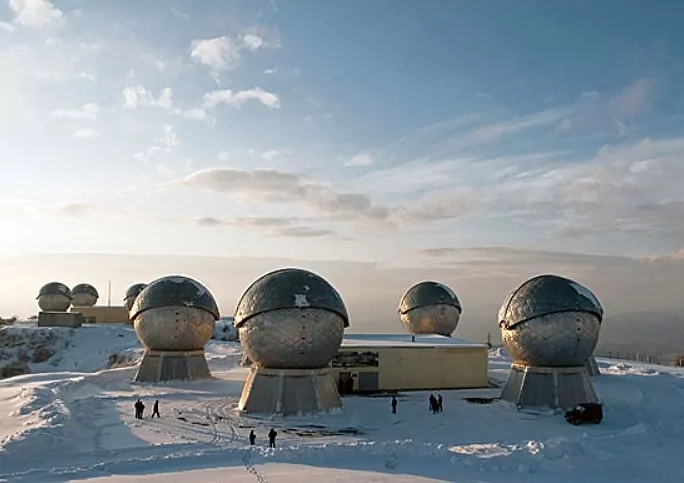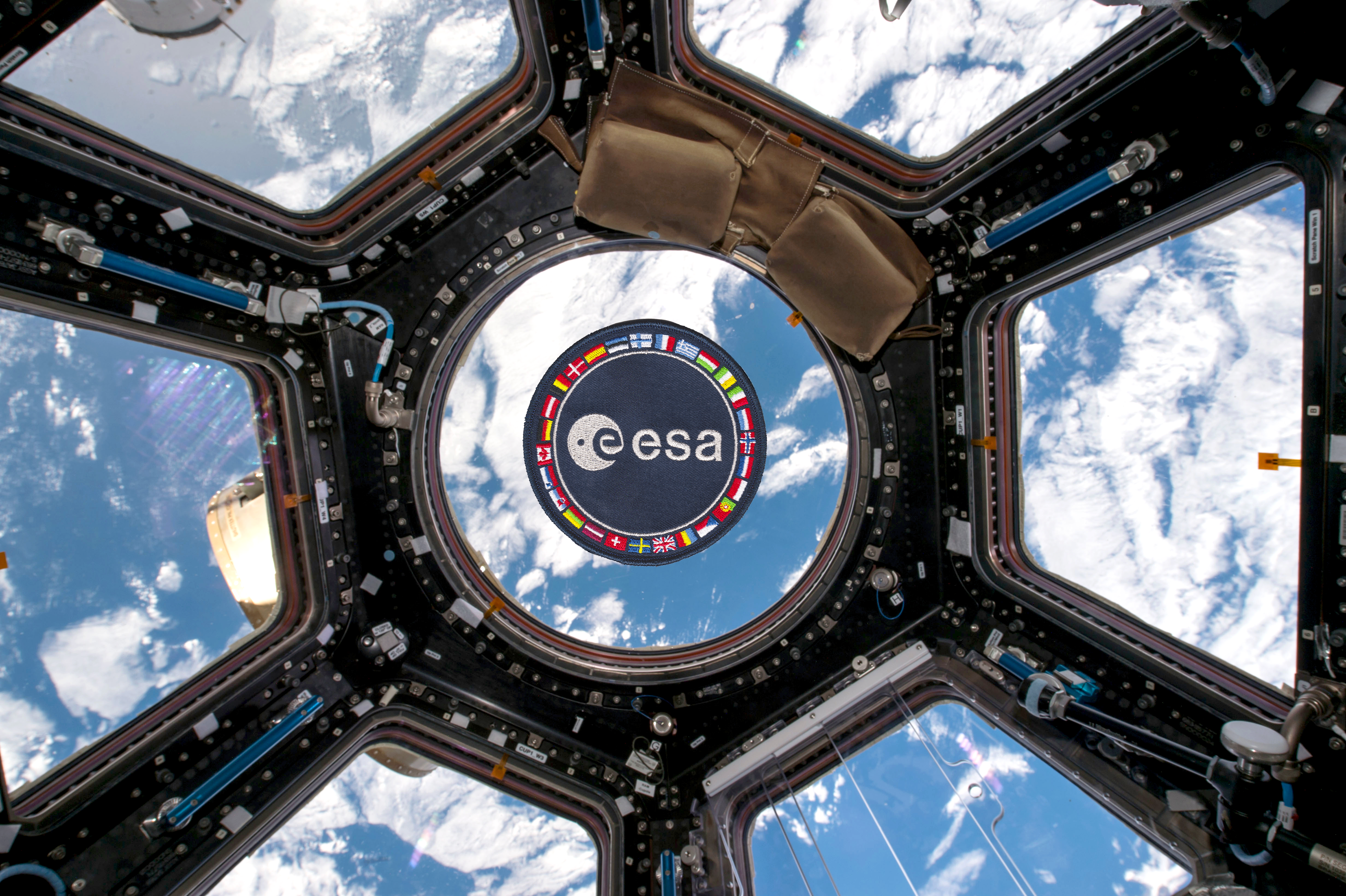· deep dive · 6 min read
JSC Vimpel
An analysis of Russia's independent space tracking system and how it compares to the established U.S. Space Surveillance Network

Russia’s Alternative Space Surveillance Network
In Earth’s orbit, approximately 40,000 tracked objects hurtle around our planet. While the United States Space Surveillance Network (SSN) has long been the global standard for tracking these objects, Russia has developed its own independent capability through JSC Vimpel, creating what Russian officials describe as “the world’s first alternative catalog of space objects” to the American system.
As space becomes increasingly crowded and contested, understanding the capabilities and limitations of different tracking networks offers important insights into the evolving landscape of space situational awareness.
Organizational Structure and Mission
JSC Vimpel (Interstate Corporation Vympel) operates as a public joint-stock company under the Almaz-Antey Air and Space Defense Corporation, firmly positioning it within Russia’s defense infrastructure. The organization is led by Sergey Boev, who serves as both Vimpel’s General Director and the General Designer of Russia’s missile attack warning system.
Vimpel fulfills a dual mission that differentiates it from Western counterparts: it maintains Russia’s Missile Attack Warning System (MAWS) while simultaneously tracking and cataloging objects in orbit. This integration of missile warning and space surveillance represents a significant organizational difference from the U.S. approach, where these functions are more compartmentalized.
Technical Capabilities and Infrastructure
Vimpel’s space surveillance network relies on a series of specialized facilities distributed primarily across Russian territory and former Soviet states. This network includes:
- The Krona complex in Russia’s North Caucasus region, which employs multiple wavelength radars to detect and identify satellites
- The Okno optoelectronic complex in Tajikistan, featuring automated telescopes that scan high-altitude orbits primarily at night
- The Moment radio-optical station near Moscow, which intercepts and analyzes satellite radio emissions
While the U.S. Space Surveillance Network benefits from a truly global distribution of sensors, Vimpel’s concentration in the Northern Hemisphere, particularly Russia and allied states, creates both advantages and limitations in its coverage.
According to official statements from Sergey Boev, Vimpel’s catalog contains data on “more than seven and a half thousand objects” that are not listed in the public version of the U.S. NORAD catalog. This claim highlights one of Vimpel’s apparent strengths: the tracking of objects in higher orbits, particularly geostationary orbit (GEO) and highly elliptical orbits (HEO).
Vimpel vs. U.S. Space Surveillance Network
The U.S. Space Surveillance Network, which provides data to Space-Track.org and indirectly to services like CelesTrak, remains the most comprehensive and accessible source of orbital information globally. With sensors distributed worldwide, the U.S. SSN can track objects across all orbital regimes with consistent coverage.
Key differences between the systems include:
-
Geographic Coverage: The U.S. SSN’s global sensor distribution provides superior continuous coverage, especially for equatorial and Southern Hemisphere orbits. Vimpel’s network, concentrated around Russian territory, may experience gaps in coverage for certain orbital paths.
-
Tracking Focus: Space-Track excels in cataloging low Earth orbit (LEO) objects, including small debris down to approximately 5cm with the Space Fence radar. Vimpel appears to emphasize high-altitude regions, particularly GEO and HEO, which it describes as “the least investigated” areas of near-Earth space.
-
Data Transparency: Space-Track.org offers free registration to users worldwide, providing orbital data for approximately 25,000-30,000 objects. Vimpel’s data has traditionally been less accessible, though as of April 2025, their website indicates that registered users can access at least some of their orbital data after agreeing to terms of service.
-
Military Applications: Both systems serve defense purposes, but Vimpel explicitly maintains a “special objects overflight warning system” to alert Russian forces when foreign reconnaissance satellites pass overhead, highlighting its integration with military operations.
The discrepancies between Vimpel’s and Space-Track’s catalogs stem from multiple factors:
- Methodological differences in sensors, processing algorithms, and update frequencies
- Selective disclosure for national security reasons (both systems omit certain sensitive information)
- Different priorities in which objects are deemed important enough to catalog and track
Technical Specifications and Data Products
Vimpel calculates orbital parameters using a sophisticated numerical model that accounts for:
- Earth’s gravitational field (geopotential harmonics up to the eighth inclusive)
- Gravitational effects from the Moon and Sun (according to DE-405 model)
- Earth’s atmosphere (in accordance with GOST R 25645.166-2004)
- Solar radiation pressure
For each tracked object, Vimpel provides extensive data including:
- Orbital elements (semi-major axis, inclination, eccentricity, etc.)
- Object brightness (magnitude, adjusted to zero phase angle and range of 40,000 km)
- Area-to-mass ratio estimates
- Position uncertainty metrics in both longitudinal and transverse directions
This level of detail enables precise predictions of an object’s location, which is essential for collision avoidance and defense applications.
International Implications
While Vimpel primarily serves Russian national interests, its development has wider international implications. In 2019, Russian officials announced cooperation with China on developing a missile attack warning system, with Vimpel’s experts providing technical assistance. This technology transfer represents a significant development in space defense capabilities.
The existence of an alternative tracking system also provides potential benefits to the international space community. The European Space Agency, for instance, incorporates data from both U.S. and Russian sources when assessing the space environment, recognizing that no single tracking system is comprehensive.
For satellite operators, having multiple independent sources of orbital data provides an important cross-check capability, particularly for high-value assets in orbits where Vimpel claims particular expertise.
Future Outlook
As orbital congestion increases with the deployment of mega-constellations and the ongoing generation of debris, comprehensive space surveillance becomes increasingly critical. The U.S. Space Surveillance Network continues to set the global standard, with its open data policies and global coverage making it the primary resource for most satellite operators.
However, Vimpel’s alternative catalog represents an important development in the multipolar nature of space situational awareness. The system provides Russia with strategic independence in tracking capabilities while potentially offering the global community additional data on objects that may be missed or not publicly reported by other systems.
Vimpel’s recent move to allow registered users access to some of its data suggests a potential shift toward greater transparency, though the full scope and limitations of this access remain to be seen. For researchers and satellite operators seeking the most comprehensive understanding of the orbital environment, considering data from multiple sources—including both the U.S. SSN and Vimpel—may provide the most complete picture.
As space activities continue to expand, the role of diverse tracking networks in maintaining safe operations will only grow in importance, with each system contributing its unique perspective to our understanding of Earth’s increasingly crowded orbital environment.
References

Theodore Kruczek




